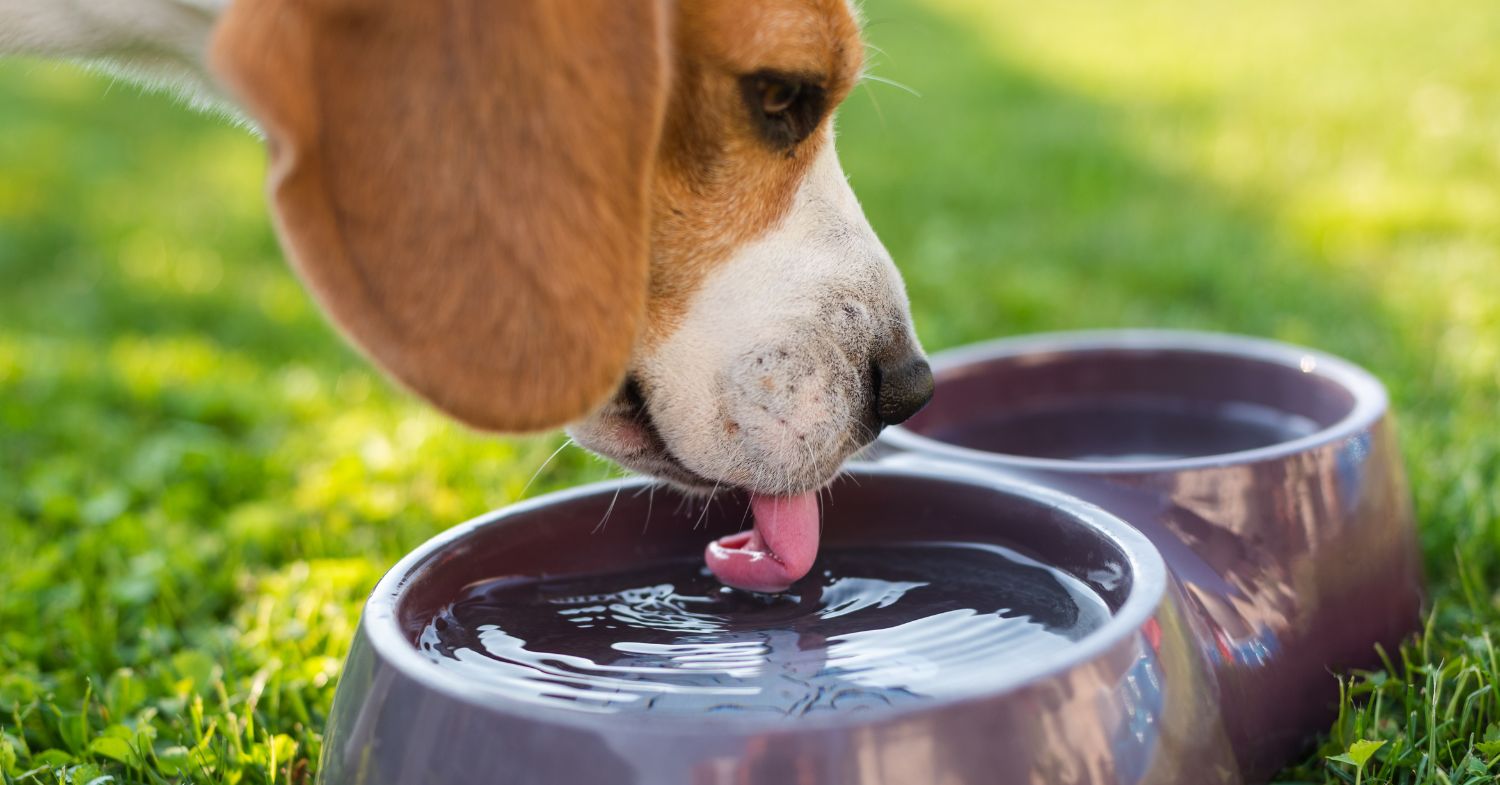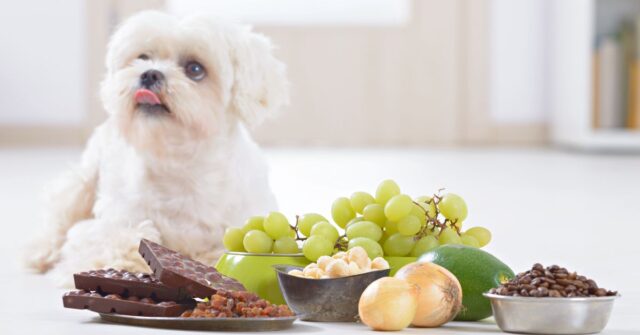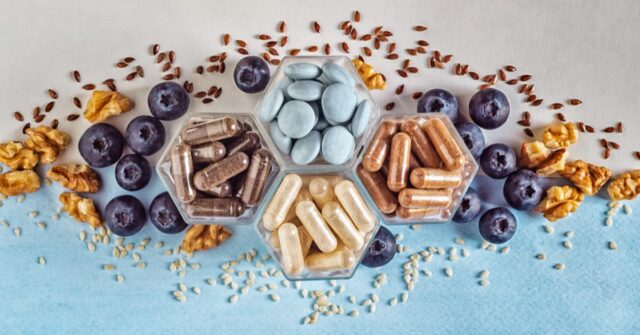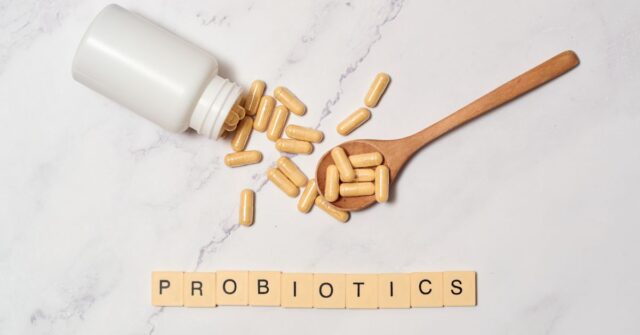Ensuring your dog stays hydrated is crucial for their overall health and well-being. Just like humans, dogs need adequate water to maintain bodily functions and prevent dehydration.
But how much water does a dog really need?
This comprehensive guide covers everything you need to know about hydrating your furry friend, from daily water requirements to recognizing signs of dehydration and practical tips for keeping your dog well-hydrated.
Understanding Your Dog’s Water Needs
Determining how much water your dog needs daily can depend on several factors, including size, diet, activity level, and environmental conditions.
Knowing these factors can help you better cater to your dog’s hydration needs.
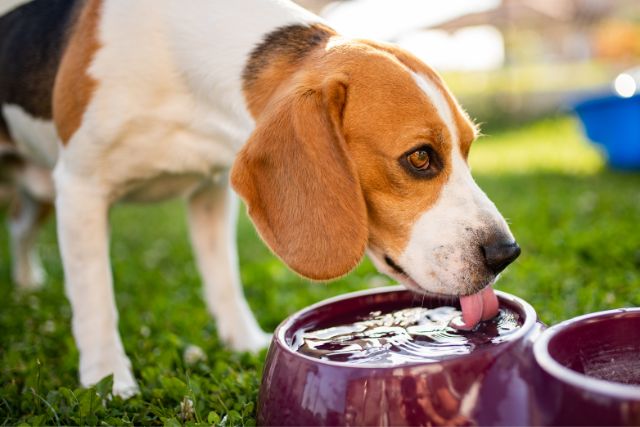
General Guidelines for Daily Water Intake
As a rule of thumb, dogs should drink about one ounce of water per pound of body weight each day.
For example, a 10 kg dog needs approximately 300 millilitres (about 10 ounces) of water daily. However, this is just a general guideline, and actual needs may vary.
Factors Affecting Water Requirements
There are various factors that can impact the amount of water your dog requires.
Size and Breed
Smaller dogs typically require less water than larger breeds. However, certain breeds may have higher water needs due to their physiology. For instance, breeds with thick coats may drink more to stay cool.
Diet: Wet Food vs. Dry Food
Dogs on a wet food diet often consume less water because their food contains a significant amount of moisture.
Conversely, dogs eating dry kibble need to drink more water to stay hydrated. Wet food typically contains 65-80% water, while dry food contains about 10-12%.
Activity Level and Exercise
Active dogs, especially those engaging in strenuous exercise, will need more water. During and after physical activities, it’s essential to provide your dog with ample water to replenish lost fluids.
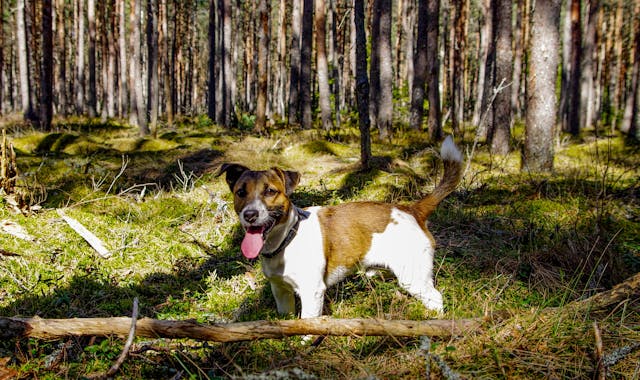
Environmental Conditions: Heat and Humidity
Dogs lose water through panting and sweating through their paws. In hot and humid climates, dogs will pant more and thus require more water to maintain their body temperature.
Always keep fresh water accessible during hot weather.
Health and Medical Conditions
Certain health conditions, like kidney disease, diabetes, and infections, can increase a dog’s water needs. Medications may also affect water consumption.
If your dog has a medical condition, consult your veterinarian about their specific hydration needs.
Recognizing Dehydration in Dogs
Dehydration can be dangerous for dogs, leading to serious health issues if not addressed promptly.
Knowing the signs of dehydration can help you take quick action to rehydrate your dog and prevent further complications.
Common Signs and Symptoms
There are two different ways you can monitor your dog’s health.
Physical Symptoms
Signs of dehydration include dry gums, sunken eyes, lethargy, and loss of skin elasticity.
To check for dehydration, gently pinch the skin on your dog’s back; if it doesn’t return to its normal position quickly, your dog might be dehydrated.
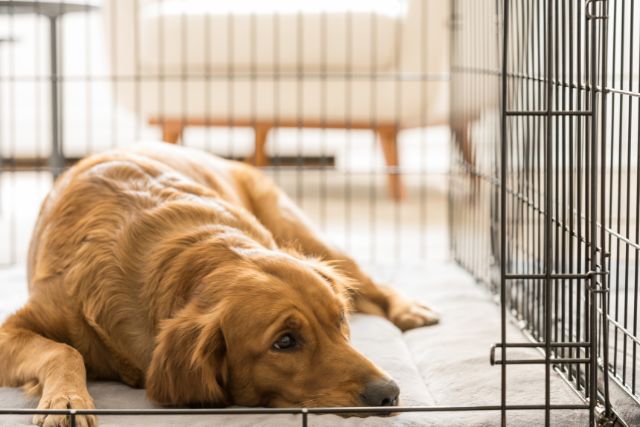
Behavioural Changes
Dehydrated dogs may also show behavioural changes such as reduced appetite, depression, and excessive panting.
If you notice any of these symptoms, it’s crucial to offer water immediately and monitor their condition.
When to Seek Veterinary Care
If your dog shows severe signs of dehydration, such as persistent vomiting, diarrhea, or extreme lethargy, seek veterinary care immediately.
Severe dehydration can lead to organ failure and other critical health issues that require professional treatment.
Practical Tips for Keeping Your Dog Hydrated
Maintaining your dog’s hydration involves more than just filling their water bowl. Here are some practical tips to help ensure your dog drinks enough water throughout the day.
Providing Fresh and Clean Water
Always provide your dog with clean, fresh water. Change the water at least once daily and wash the bowl to prevent bacteria buildup. Ensure the water is at room temperature to encourage drinking.

Choosing the Right Water Bowl
Opt for stainless steel or ceramic bowls, as they are easier to clean and less likely to harbour bacteria.
Ensure the bowl is the right size for your dog, with larger bowls for bigger dogs and smaller bowls for toy breeds.
Placing Multiple Water Sources
Place water bowls in different areas of your home and yard to make it easy for your dog to access water wherever they are.
Consider placing bowls in the kitchen, living room, and any other area your dog frequents.
Using Interactive Toys and Flavored Water
Encourage your dog to drink more by using interactive toys that dispense water or offering flavoured water. Adding a small amount of low-sodium chicken broth to the water can make it more appealing.
Adjusting Water Intake During Exercise and Hot Weather
When exercising with your dog, take frequent water breaks. Carry a collapsible water bowl and a bottle of water to hydrate your dog on the go.
During hot weather, provide extra water and keep the water bowls in shaded areas.
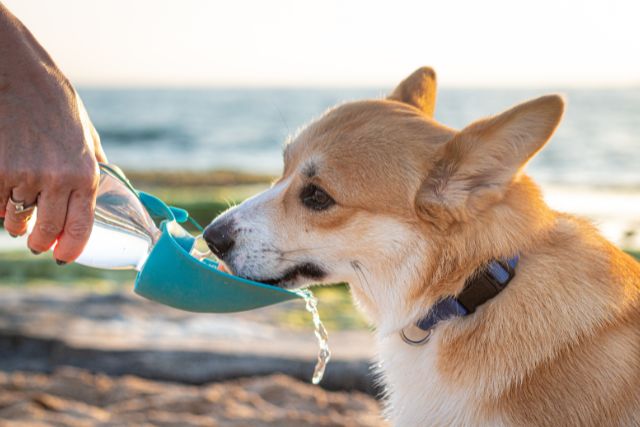
Incorporating Wet Food and Hydrating Treats
Adding wet food to your dog’s diet can increase their water intake. You can also offer hydrating treats like watermelon, cucumber, and ice cubes made from dog-friendly broth.
Addressing Common Concerns
Understanding the nuances of your dog’s hydration can help you address any concerns you may have about their water intake and overall health.
Over-Hydration: Signs and Risks
While less common, over-hydration can occur and is also a health risk. Signs include excessive urination, bloating, and lethargy.
Over-hydration can indicate underlying issues like diabetes or kidney disease, so consult your vet if you notice these symptoms.
Safety of Tap Water vs. Filtered/Bottled Water
In most areas, tap water is safe for dogs. However, if you live in an area with poor water quality, consider using filtered or bottled water.
Always consult your vet if you have concerns about your local water supply.

Special Considerations
Certain groups of dogs, such as puppies, seniors, and those with health conditions, may require special attention to their hydration needs.
Puppies and Senior Dogs
Puppies need more frequent water intake due to their higher activity levels and growing bodies. Offer water every couple of hours.
Senior dogs may drink less due to decreased activity or mobility issues. Consider using elevated bowls and ensuring water is easily accessible.
Dogs with Health Conditions
Dogs with medical conditions like diabetes or kidney disease often have increased water needs. Monitor their intake closely and consult your vet for specific hydration guidelines.
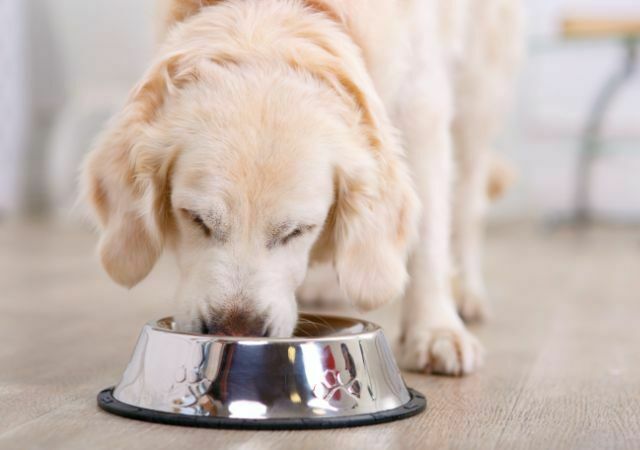
Conclusion
Keeping your dog hydrated is essential for their health and happiness.
By understanding their water needs, recognizing signs of dehydration, and following practical tips for maintaining hydration, you can help your furry friend stay healthy and active.
Always observe your dog’s drinking habits and consult your vet with any concerns to ensure your dog receives the best care possible.

